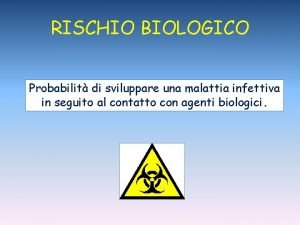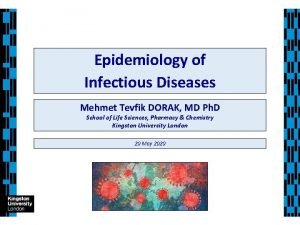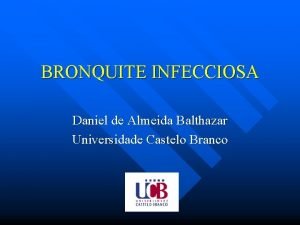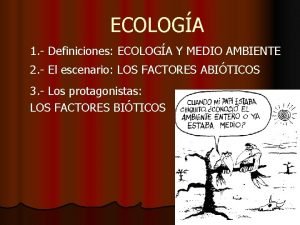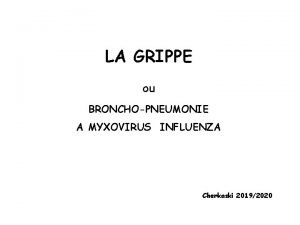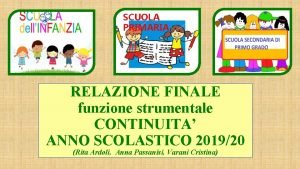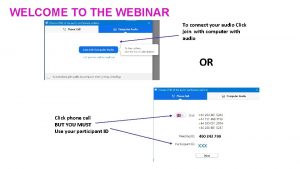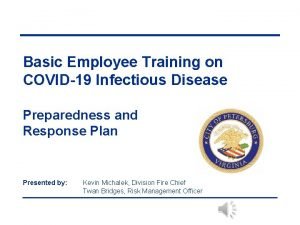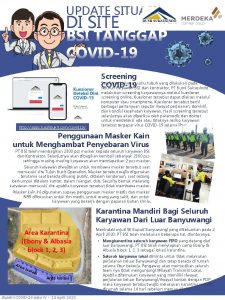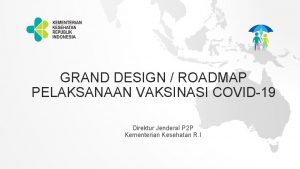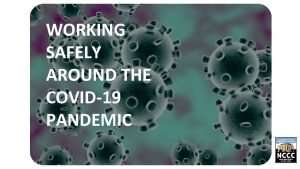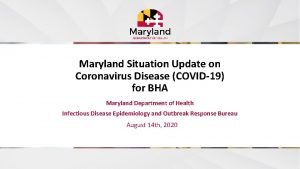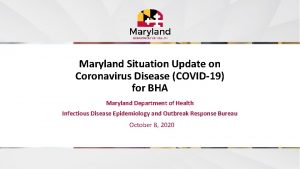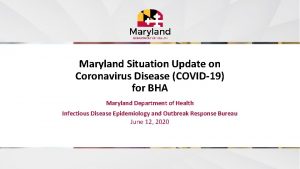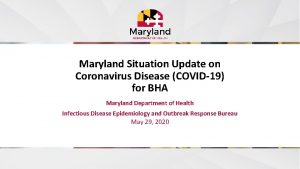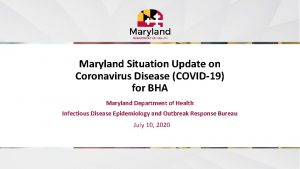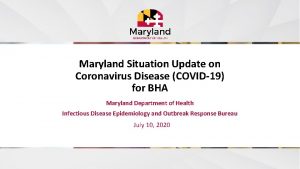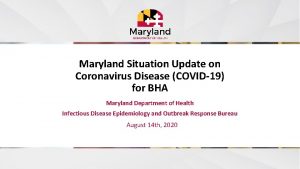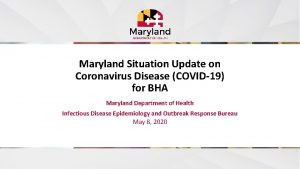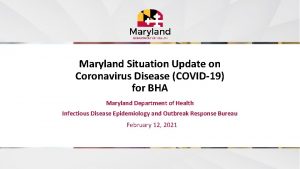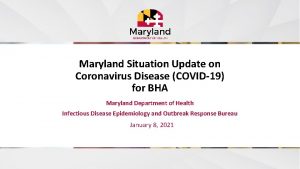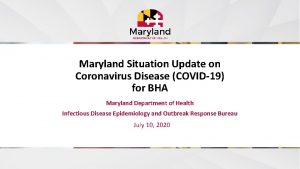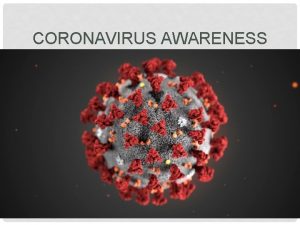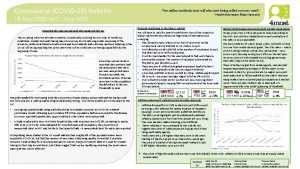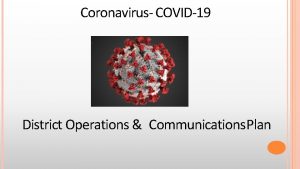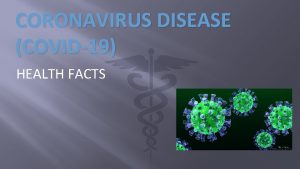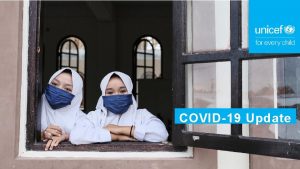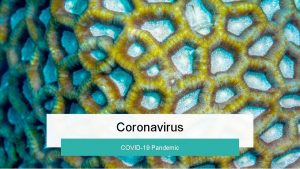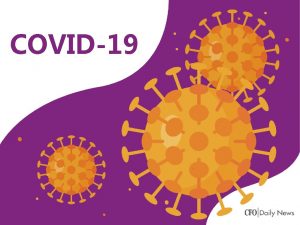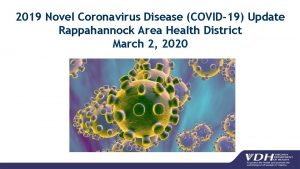Maryland Situation Update on Coronavirus Disease COVID19 for

























- Slides: 25

Maryland Situation Update on Coronavirus Disease (COVID-19) for BHA Maryland Department of Health Infectious Disease Epidemiology and Outbreak Response Bureau September 25, 2020

Call Agenda Picture Courtesy of NIAID-RML • Review current situation of COVID-19 • Long Haulers • Questions and Answers 2

COVID-19 Global Situation Summary 3

U. S. : COVID-19 Cases 4 https: //www. cdc. gov/coronavirus/2019 -ncov/cases-updates/cases-in-us. html Accessed 9/25/2020

Number of Cases Reported in the USA, by Day 5

http: //health. maryland. gov/coronavirus Maryland: COVID-19 Cases • Cases: 122, 359 • 559 new • Deaths: 3, 772 • 7 new • Hospitalizations: 15, 139 • Current: 344 • Total tests 2, 324, 252 6 Data current as of 9/25/2020

7

8

Testing Volume and % Positivity 9

10

CMS Updates

New CMS Memo Reversing Nursing Home Restrictions https: //www. cms. gov/files/document/qso-20 -39 -nh. pdf

General Visitation Allowed and Required • Outdoor visitation is preferred over indoor visitation; it is safer and can be conducted in a manner that reduces the risk of transmission • Facilities may allow indoor visits, while adhering to the following guidance to mitigate risks • Facilities may not restrict visitation without a reasonable clinical or safety cause • Health care workers and volunteers who are not employees of the facility but provide direct care to the facility’s residents must be permitted to come into the facility 13

CMS Core Principles of COVID-19 Infection Prevention • Screening of all who enter the facility for signs and symptoms of COVID-19 (e. g. , temperature checks, questions or observations about signs or symptoms), and denial of entry of those with signs or symptoms • Hand hygiene (use of alcohol-based hand rub is preferred) • Face covering or mask (covering mouth and nose) • Social distancing at least six feet between persons • Instructional signage throughout the facility and proper visitor education on COVID 19 signs and symptoms, infection control precautions, other applicable facility practices • Cleaning and disinfecting high frequency touched surfaces in the facility often, and designated visitation areas after each visit • Appropriate staff use of Personal Protective Equipment (PPE) • Effective cohorting of residents (e. g. , separate areas dedicated COVID-19 care) • 14 Resident and staff testing conducted as required at 42 CFR 483. 80(h) (see QSO-20 - 38 NH)

When Can Indoor Visitation Occur? • Indoor visitation may only occur when there has been no new onset cases of COVID-19 in the last 14 days in staff or residents and the facility is not currently conducting outbreak-related testing of residents • Community percent positivity must be under 10% • Outdoor visitation is preferred, but indoor visitation may occur when weather and other factors preclude outdoor visitation 15

What is Required for Indoor Visits • Visitors should be able to adhere to the core principles and staff should provide monitoring for those who may have difficulty adhering to core principles, such as children • Facilities should limit the number of visitors per resident at one time and limit the total number of visitors in the facility at one time (based on the size of the building and physical space). Facilities should consider scheduling visits for a specified length of time to help ensure all residents are able to receive visitors • Facilities should limit movement in the facility. For example, visitors should not walk around different halls of the facility. Rather, they should go directly to the resident’s room or designated visitation area. Visits for residents who share a room should not be conducted in the resident’s room. 16

Compassionate Care Visitation • Compassionate Care visits may occur even when community percent positivity is over 10%, and/or when there is an outbreak in the facility • Does not exclusively refer to end-of-life situations • Visits should be conducted using social distancing • Residents who are on transmission-based precautions for COVID 19 should only receive visits that are virtual, through windows, or in-person for compassionate care situations, with adherence to transmission-based precautions 17

Communal Dining and Group Activities • Residents may eat in the same room with social distancing (e. g. , limited number of people at each table and with at least six feet between each person) • Facilities should consider additional limitations based on status of COVID-19 infections in the facility • Group activities may also be facilitated (for residents who have fully recovered from COVID-19, and for those not in isolation for observation, or with suspected or confirmed COVID-19 status) with social distancing among residents, appropriate hand hygiene, and use of a face covering • Facilities may be able to offer a variety of activities while also taking necessary precautions 18

CDC Updates 19

Source: https: //www. cdc. gov/coronavirus/2019 -ncov/prevent-getting-sick/how-covidspreads. html, Accessed 9/22/20 20

21 https: //www. cdc. gov/coronavirus/2019 -ncov/hcp/testing-overview. html

Updated (i. e. , Restored) CDC Testing Guidance (September 18, 2020) 22 https: //www. cdc. gov/coronavirus/2019 -ncov/hcp/testing-

Testing Asymptomatic Close Contacts is Critical to Stopping the Spread • Cases (infectious) and contacts (exposed, therefore at higher risk of developing disease) are advised to isolate/quarantine • As many as 40%-45%* of SARS-Co. V-2 infections are asymptomatic • Asymptomatic individuals can transmit disease and are considered one of the driving forces of the pandemic • Identifying infectious close contacts is critical in breaking transmission chains 23 • Critical to test asymptomatic close contacts of new cases • Identification of infectious asymptomatic contacts allows for another generation of contact tracing in order to identify contacts of the infectious close contacts *Annals of Internal Medicine doi: 10. 7326/M 20 -3012 (June 3,

Negative Tests Do Not Shorten Quarantine for Close Contacts • NOTE: A negative test of a close contact does not shorten the recommended 14 -day quarantine period, because the close contact could develop disease up until the end of the incubation period 24

Questions? Email : mdh. ipcovid@Maryland. gov 25
 Alternative of log based recovery
Alternative of log based recovery Contenitori per trasporto materiale biologico
Contenitori per trasporto materiale biologico Mehmet dorak
Mehmet dorak Bronquite coronavirus
Bronquite coronavirus 3 abioticos
3 abioticos Scissurite coronavirus
Scissurite coronavirus Rischio biologico coronavirus | titolo x d.lgs. 81/08
Rischio biologico coronavirus | titolo x d.lgs. 81/08 Relazione funzione strumentale continuità
Relazione funzione strumentale continuità Covid19 athome rapid what know
Covid19 athome rapid what know What do if test positive covid19
What do if test positive covid19 Http//apps.tujuhbukit.com/covid19
Http//apps.tujuhbukit.com/covid19 Vaksin covid19
Vaksin covid19 Do if you covid19
Do if you covid19 Mdh situation update
Mdh situation update Communicable disease and non communicable disease
Communicable disease and non communicable disease Datorkunskap för nybörjare
Datorkunskap för nybörjare Ellika andolf
Ellika andolf Returpilarna
Returpilarna Rita perspektiv
Rita perspektiv Redogör för vad psykologi är
Redogör för vad psykologi är Bästa kameran för astrofoto
Bästa kameran för astrofoto Lek med geometriska former
Lek med geometriska former Offentlig förvaltning
Offentlig förvaltning Dikt om ljus
Dikt om ljus Nyckelkompetenser för livslångt lärande
Nyckelkompetenser för livslångt lärande Fredsgudinna pax
Fredsgudinna pax

